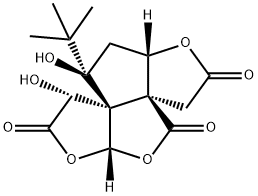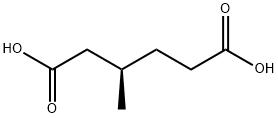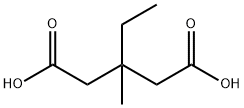Bilobalide
Synonym(s):Bilobalide
- CAS NO.:33570-04-6
- Empirical Formula: C15H18O8
- Molecular Weight: 326.3
- MDL number: MFCD00210481
- EINECS: 608-892-9
- SAFETY DATA SHEET (SDS)
- Update Date: 2025-12-19 17:28:17

What is Bilobalide?
Description
Bilobalide is a sesquiterpene lactone which is found in extracts of G. biloba. It has been shown to protect against cerebral edema, decrease cortical infarct volume, and reduce cerebral ischemic damage. Bilobalide, at 10 μM, reduces the release of glycine and glutamate from hippocampal slices under ischemic conditions. It also activates the rat constitutive androstane receptor at 100 μM and increases the levels and activities of several cytochrome P450 isoforms in rat liver microsomes.
The Uses of Bilobalide
Bilobalide provides protection against learning and memory impairment by reducing free radical injury and inhibiting neuronal apoptosis in the brain cortex and hippocampal CA1 region in induced vascular dementia rats.
The Uses of Bilobalide
Reference Standard in the analysis of herbal medicinal products
What are the applications of Application
Bilobalide is a compound with neuroprotective, antibacterial, and inhibitory effects
Definition
ChEBI: A terpenoid trilactone found in extracts of Ginkgo biloba.
General Description
Produced and qualified by HWI pharma services GmbH.
Exact content by quantitative NMR can be found on the certificate.
Enzyme inhibitor
This plant natural product (FW = 326.30 g/mol; CAS 33570-04-6) from the gingko tree (Ginkgo biloba) is a terpene trilactone that exhibits anticonvulsant properties. Bilobalide has multiple mechanisms of action (e.g., acting as a GABAA receptor antagonist (/1), preserving mitochondrial ATP synthesis, inhibiting staurosporine-induced apoptotic damage, suppressing hypoxia-induced membrane deterioration in the brain, and increasing the expression the mitochondrial DNA-encoded COX III subunit of cytochrome c oxidase and the ND1 subunit of NADH dehydrogenase). Bilobalide was later synthesized in E. J. Corey’s laboratory in the late 1980s.
Properties of Bilobalide
| Melting point: | >300° |
| alpha | 57820 -64.3° (c = 2 in acetone) |
| Boiling point: | 651.7±55.0 °C(Predicted) |
| Density | 1.56±0.1 g/cm3(Predicted) |
| storage temp. | −20°C |
| solubility | Acetone (Slightly), Methanol (Slightly) |
| form | neat |
| form | Solid |
| pka | 11.74±0.40(Predicted) |
| color | White to Off-White |
| Merck | 14,1220 |
| Stability: | Hygroscopic |
| CAS DataBase Reference | 33570-04-6(CAS DataBase Reference) |
Safety information for Bilobalide
| Signal word | Danger |
| Pictogram(s) |
 Corrosion Corrosives GHS05  Exclamation Mark Irritant GHS07  Environment GHS09 |
| GHS Hazard Statements |
H302:Acute toxicity,oral H315:Skin corrosion/irritation H317:Sensitisation, Skin H318:Serious eye damage/eye irritation H410:Hazardous to the aquatic environment, long-term hazard |
| Precautionary Statement Codes |
P261:Avoid breathing dust/fume/gas/mist/vapours/spray. P264:Wash hands thoroughly after handling. P264:Wash skin thouroughly after handling. P270:Do not eat, drink or smoke when using this product. P272:Contaminated work clothing should not be allowed out of the workplace. P273:Avoid release to the environment. P280:Wear protective gloves/protective clothing/eye protection/face protection. P391:Collect spillage. Hazardous to the aquatic environment P302+P352:IF ON SKIN: wash with plenty of soap and water. P333+P313:IF SKIN irritation or rash occurs: Get medical advice/attention. P501:Dispose of contents/container to..… |
Computed Descriptors for Bilobalide
New Products
Indole Methyl Resin tert-butyl 9-methoxy-3-azaspiro[5.5]undecane-3-carboxylate Boc-His(Boc)-OH 2-CTC Resin 4-Chloro-7-tosy1-7Hpyrrolo[2,3-d]pyrimidine 5,7-Dibromo-1H-indole 2,5-dichloro-N-hydroxy-4,6-dimethylpyridine-3-carboximidamide 2,2-Dimethoxy-7-azaspiro[3.5]nonane hydrochloride 4-chloromethyl-5-methyl-1,3-dioxol-2-one (DMDO-Cl) R-2-BENZYLOXY PROPIONIC ACID 1,1’-CARBONYLDIIMIDAZOLE 1,1’-CARBONYLDI (1,2-4 TRIAZOLE) N-METHYL INDAZOLE-3-CARBOXYLIC ACID 4-((2-hydroxyethyl)thio)benzoic acid 1-(TERT-BUTOXYCARBONYL)-2-PYRROLIDINONE Methyl 6-methylnicotinate 3-Pyridineacrylic acid tert-Butyl carbazate TETRAHYDRO-2H-PYRAN-3-OL 2-((4-morpholinophenylamino) (methylthio) methylene) malononitrile 3-(4-morpholinophenylamino)-5-amino-1H-pyrazole-4-carbonitrile 2,4-dihydroxybenzaldehyde 1,3-Diethyl-1,3-Diphenylurea Methyl 2-methylquinoline-6-carboxylateRelated products of tetrahydrofuran








You may like
-
 Bilobalide 98% (HPLC) CAS 33570-04-6View Details
Bilobalide 98% (HPLC) CAS 33570-04-6View Details
33570-04-6 -
 Bilobalide CAS 33570-04-6View Details
Bilobalide CAS 33570-04-6View Details
33570-04-6 -
 (−)-Bilobalide CAS 33570-04-6View Details
(−)-Bilobalide CAS 33570-04-6View Details
33570-04-6 -
 (-)-Bilobalide CAS 33570-04-6View Details
(-)-Bilobalide CAS 33570-04-6View Details
33570-04-6 -
 (−)-Bilobalide from Ginkgo biloba leaves CAS 33570-04-6View Details
(−)-Bilobalide from Ginkgo biloba leaves CAS 33570-04-6View Details
33570-04-6 -
 Pyridine 99.5% HPLC /UV SpectroscopyView Details
Pyridine 99.5% HPLC /UV SpectroscopyView Details
110-86-1 -
 Dibutyl PhthalateView Details
Dibutyl PhthalateView Details
84-74-2 -
 Thiourea 99% ARView Details
Thiourea 99% ARView Details
62-56-6
